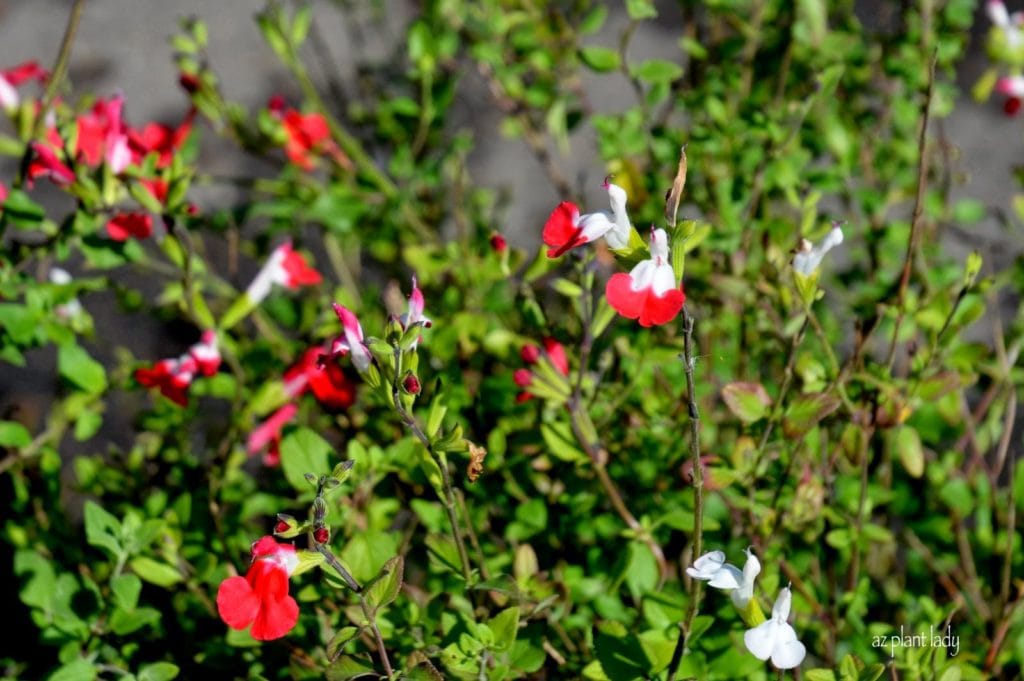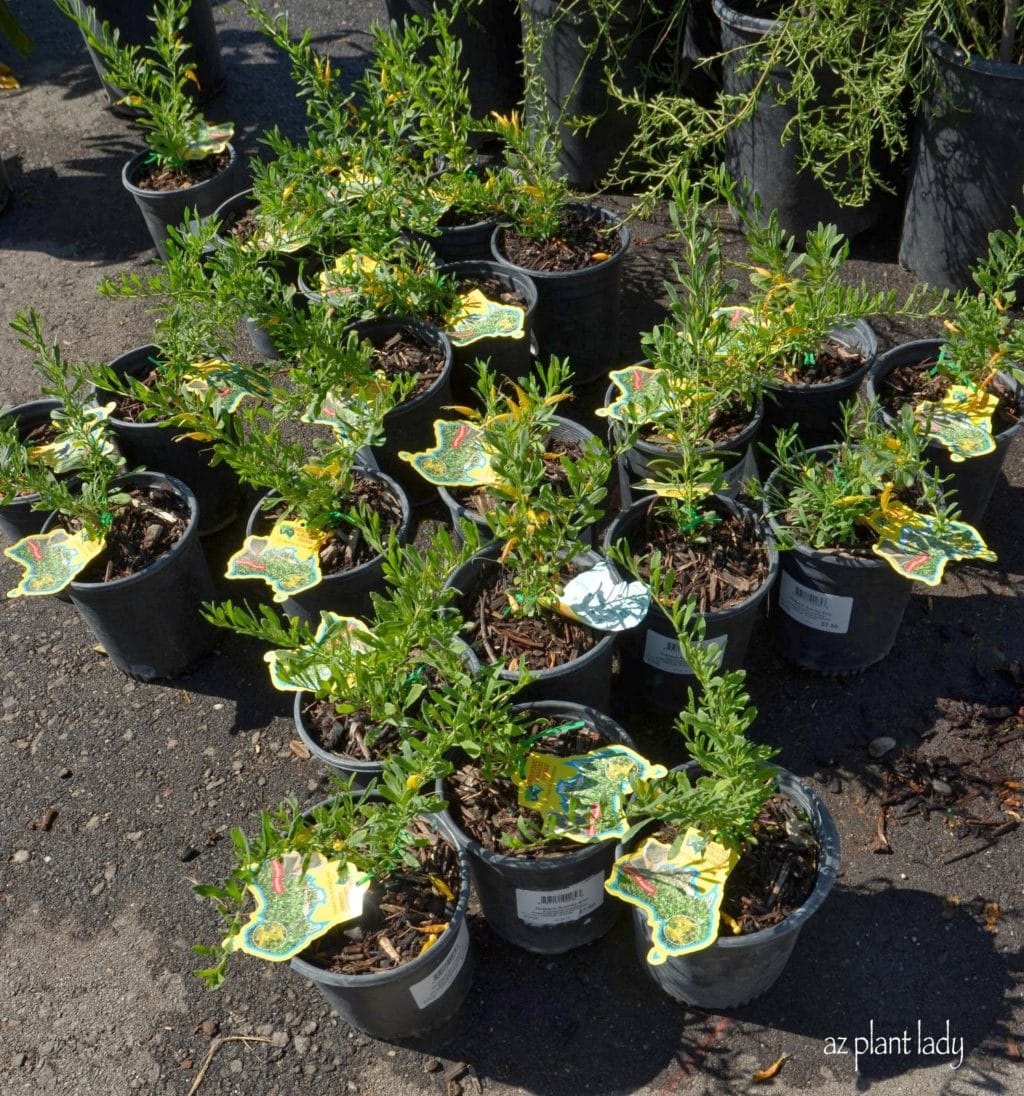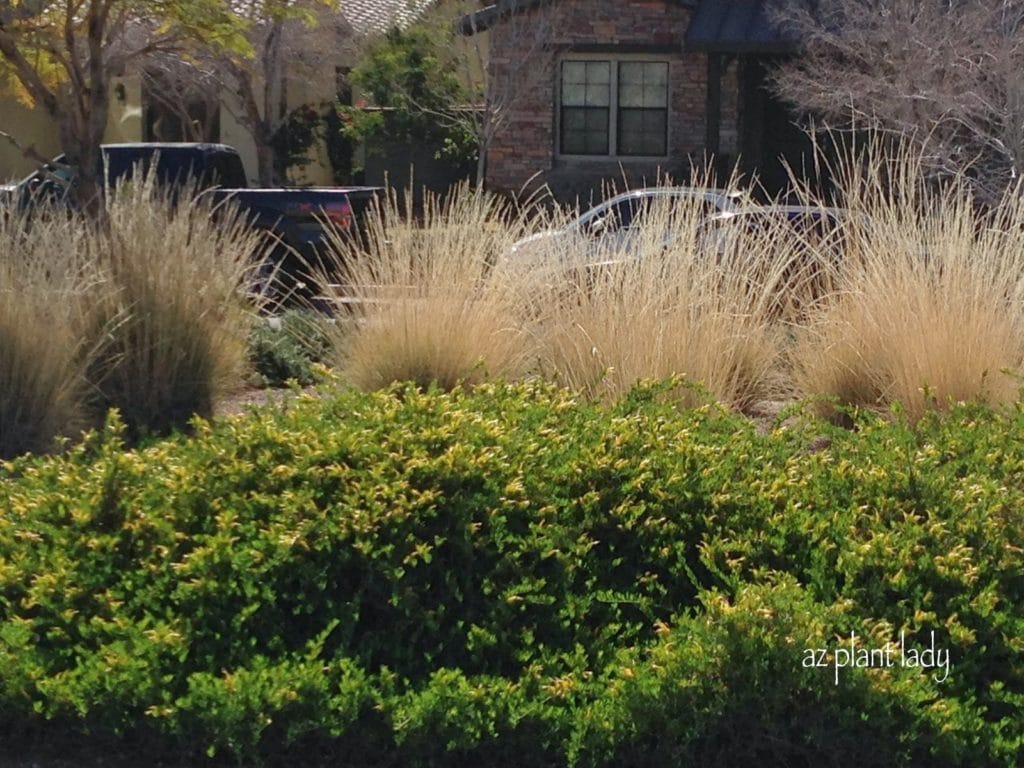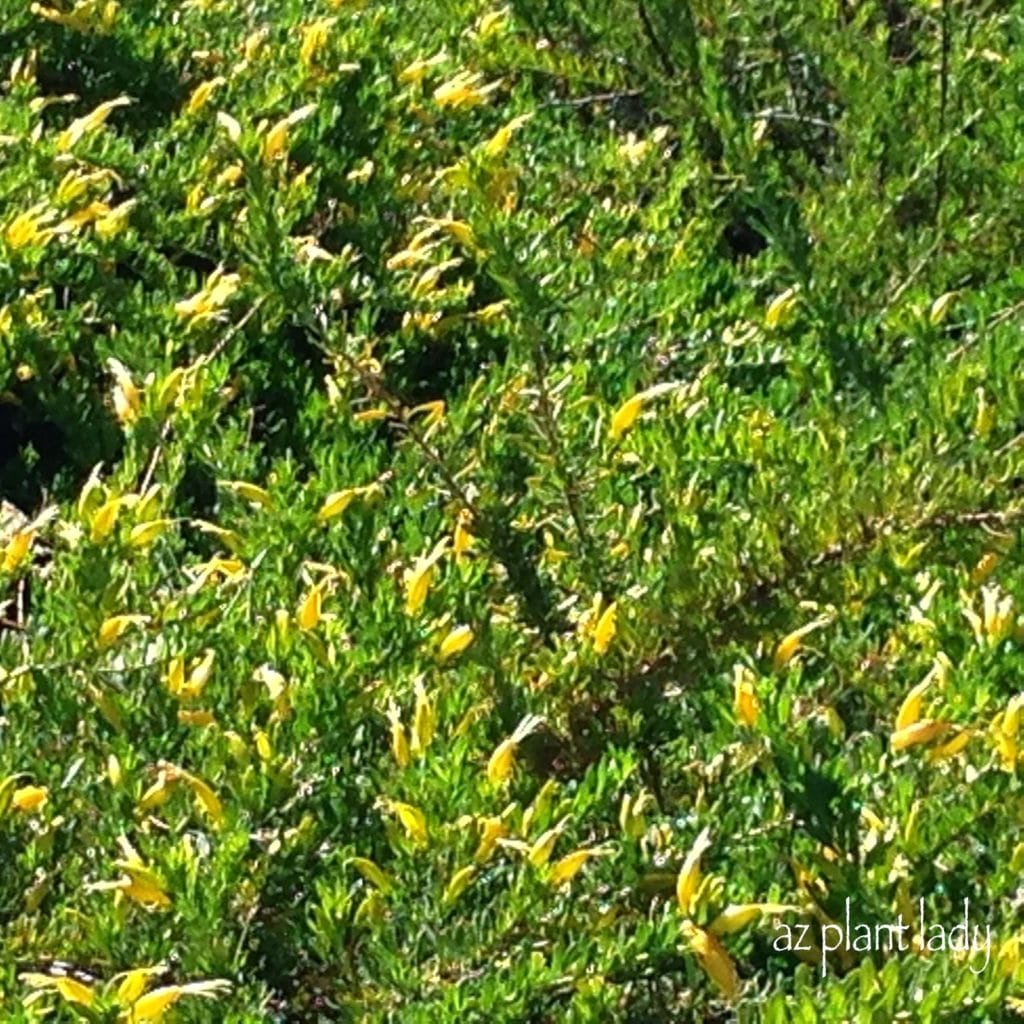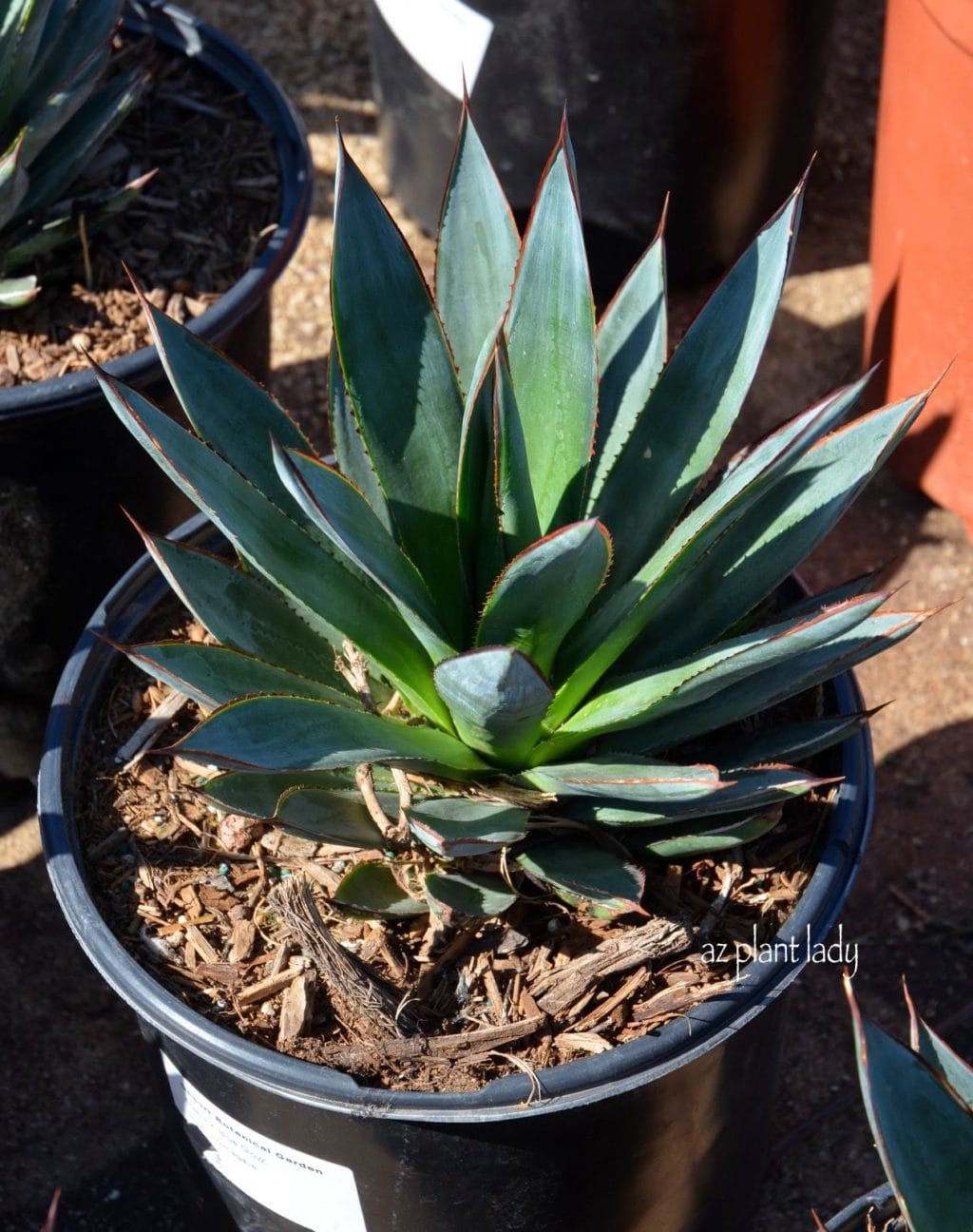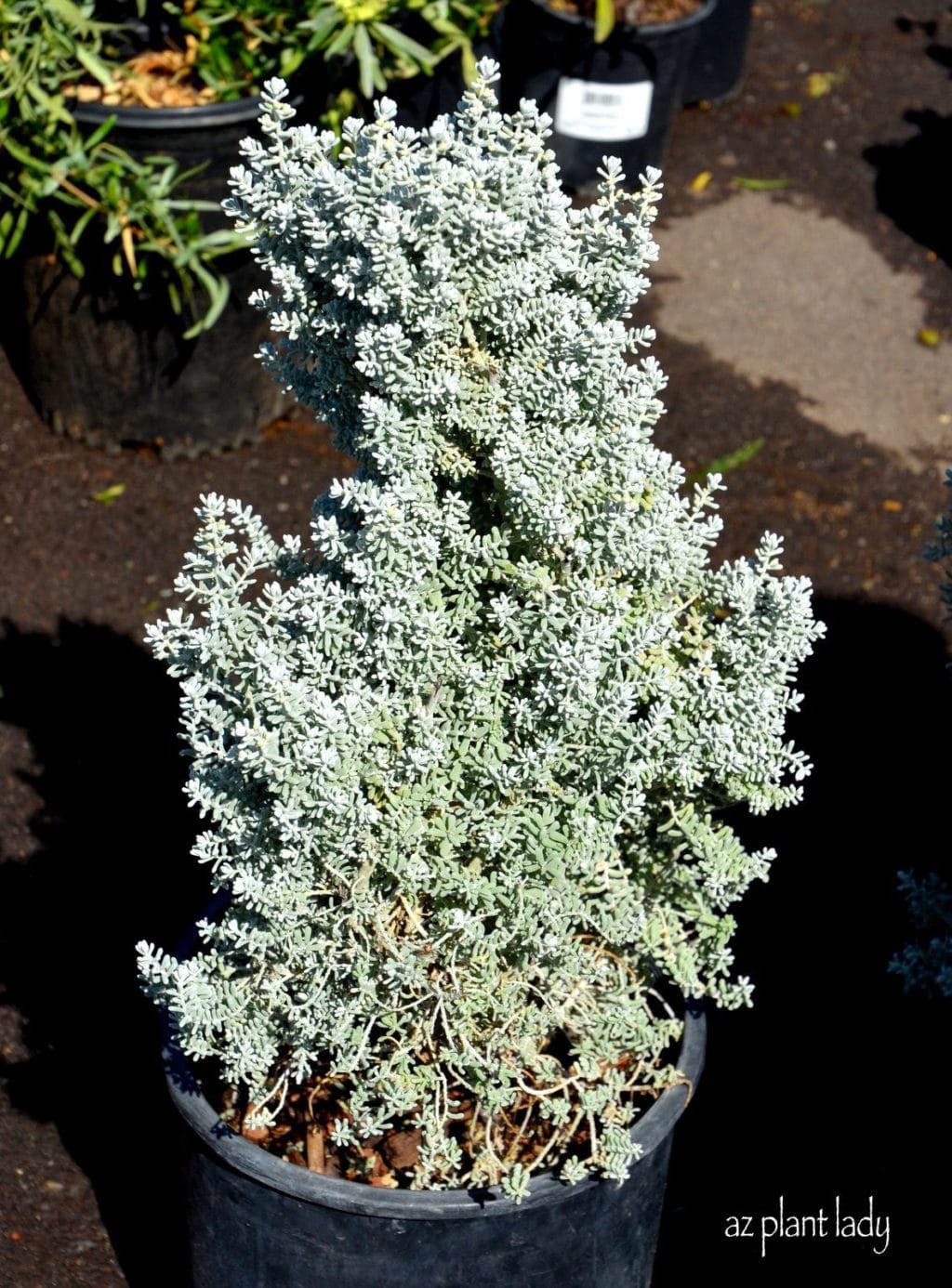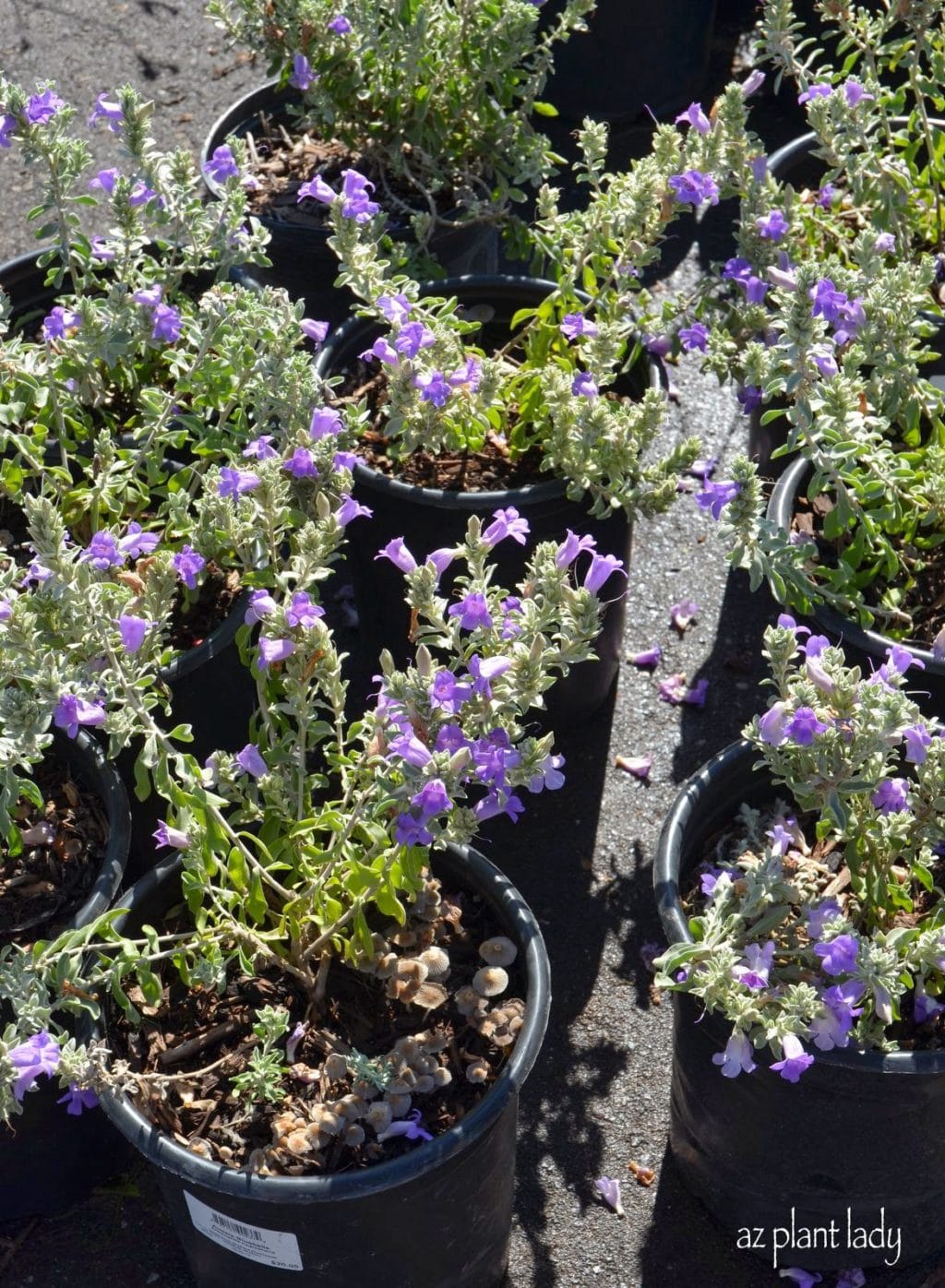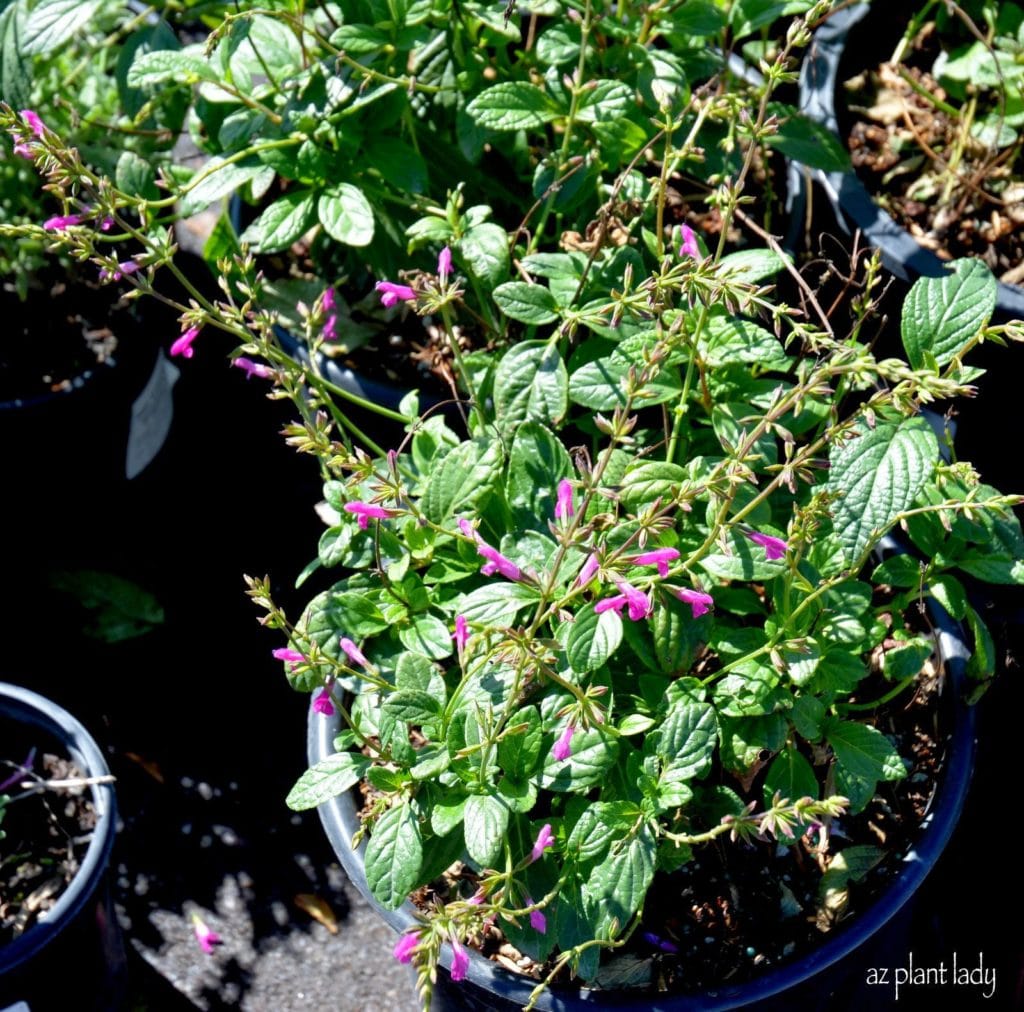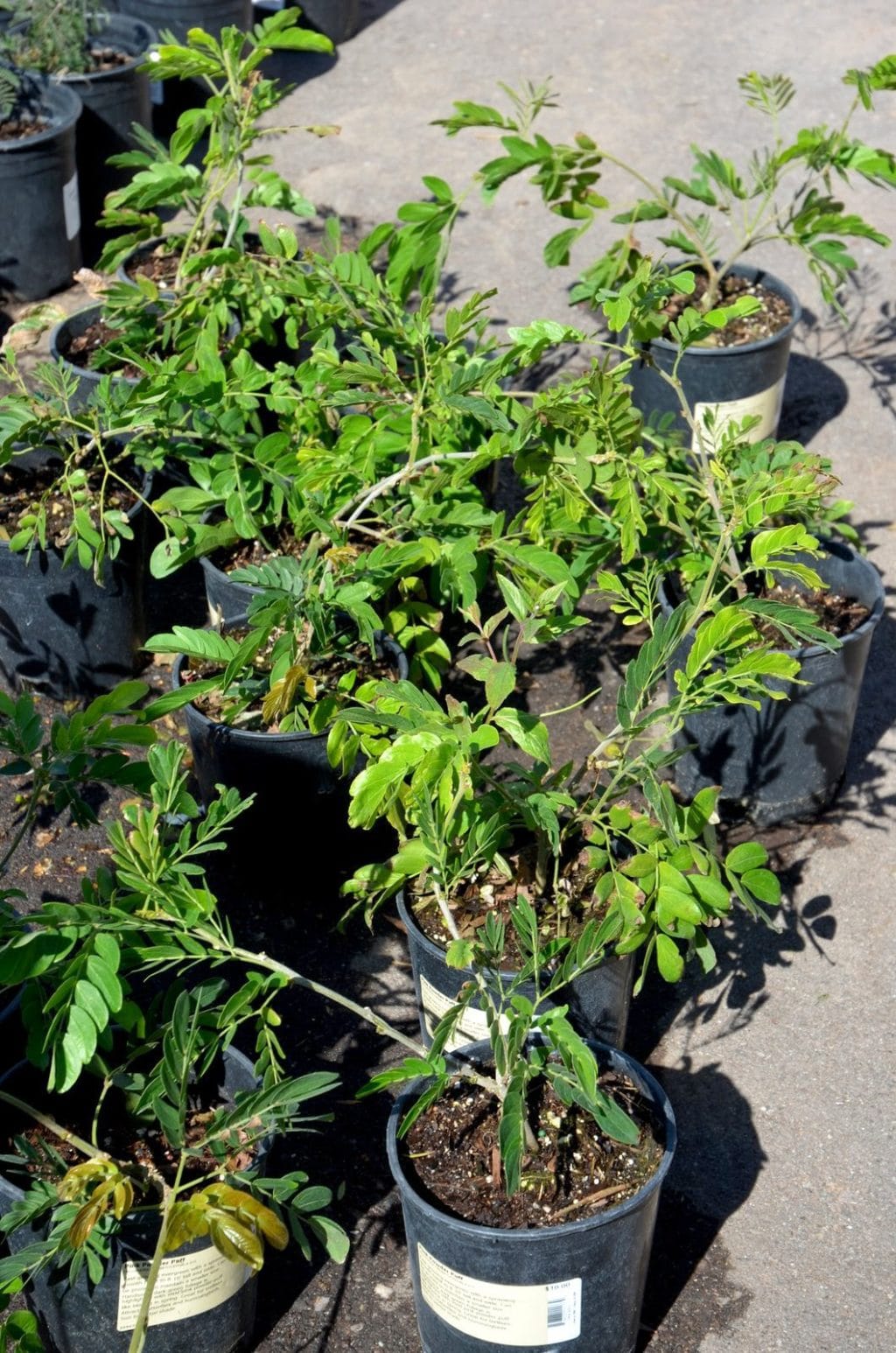I am busy putting the finishing touches on my presentation for an upcoming speaking engagement this Monday evening…
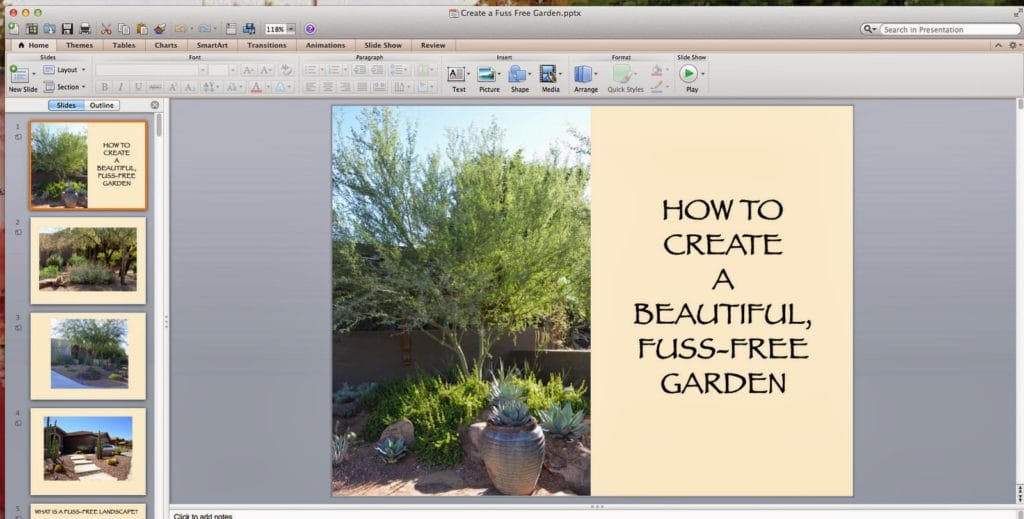
The women’s ministry at Cornerstone Church in Chandler, AZ asked me to speak about desert gardening.
Now, I love talking about how easy it is to have a beautiful and low-maintenance garden in the desert – yes, I said easy.
We are the ones that make our landscapes high-maintenance by making the following mistakes:
– Not allowing plants enough room to grow, which leads to over-pruning.
– Pruning plants more often then they need it.
– Selecting plants that aren’t well-adapted to our climate.
– Using fertilizer on plants that almost never need to be fertilized.
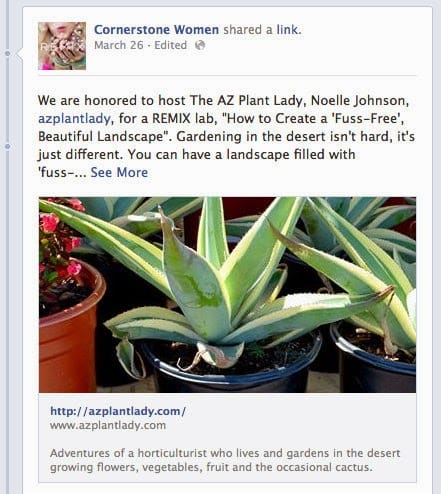
The event begins at 7:00 with the main speaker and afterward, attendees are given the choice of going to one of several ‘labs’ being offered at 8:00 pm.
I will be heading up the lab, “Creating a Beautiful, Fuss-Free Garden”.

The main speaker, is Lysa TerKeurst, who is fabulous.
And, did I mention that the entire event is FREE??? There is no need to register. Just show up. Here is a link for more information.
I’d love to those of you who live in the greater Phoenix area!
********************
On another note, I have been talking about attending plant sales and sharing with you about new varieties of some popular plants available along with a few of the newest plant introductions.
I had mentioned that I had come away with 3 new plants from the Desert Botanical Garden’s Spring Plant Sale.
So today, I thought that I would share with you the plants I chose and why…
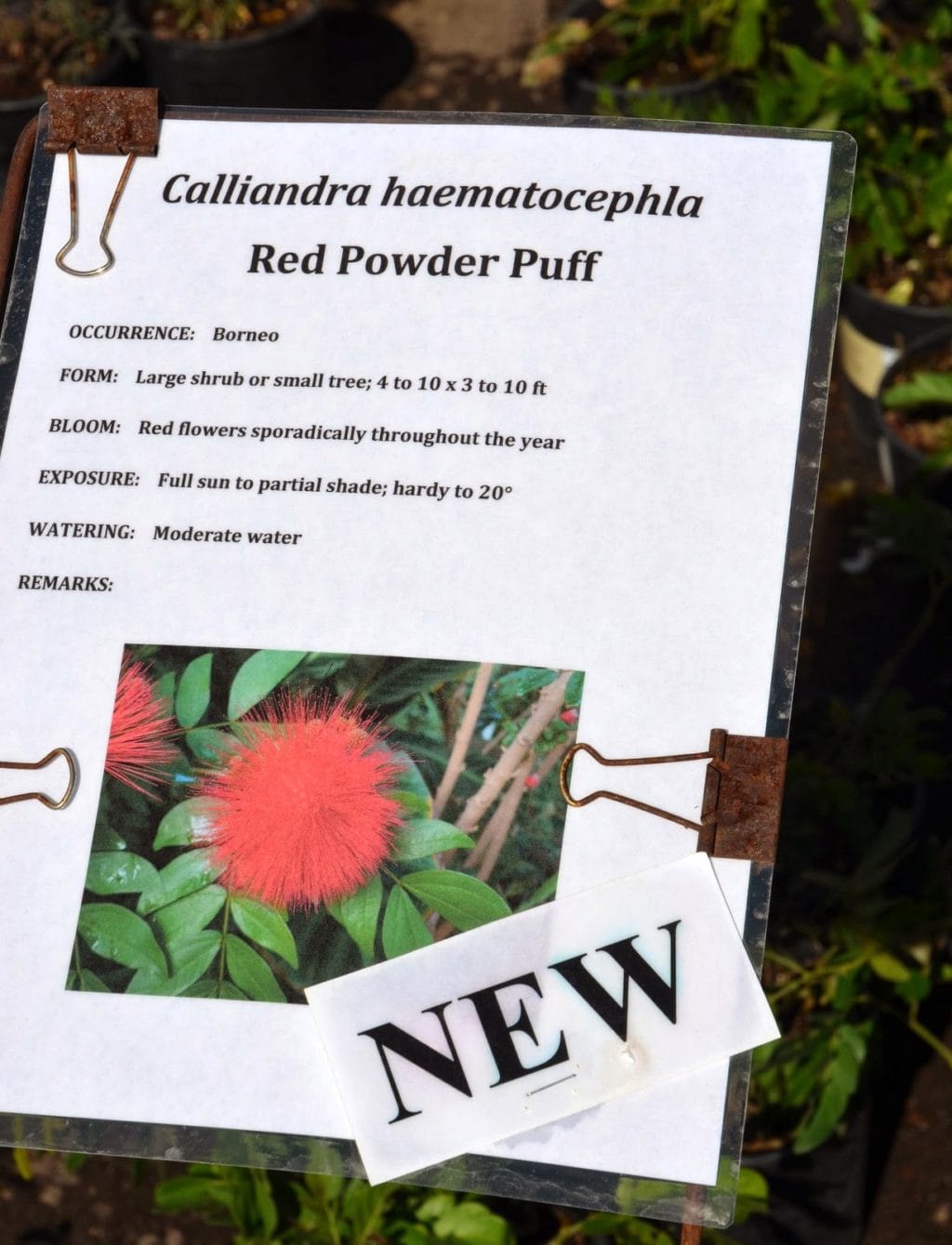
1. The first plant I chose is one that I have never grown before – Red Powder Puff (Calliandra haematocephla). As indicated on the plant sign, it is new to the market.
It is related to Red & Pink Fairy Duster shrubs, (which are great plants for the desert landscape, by the way).
I was entranced by the photo of large, puff-ball flowers. I also liked that I could grow it as a small tree, if I wanted too.
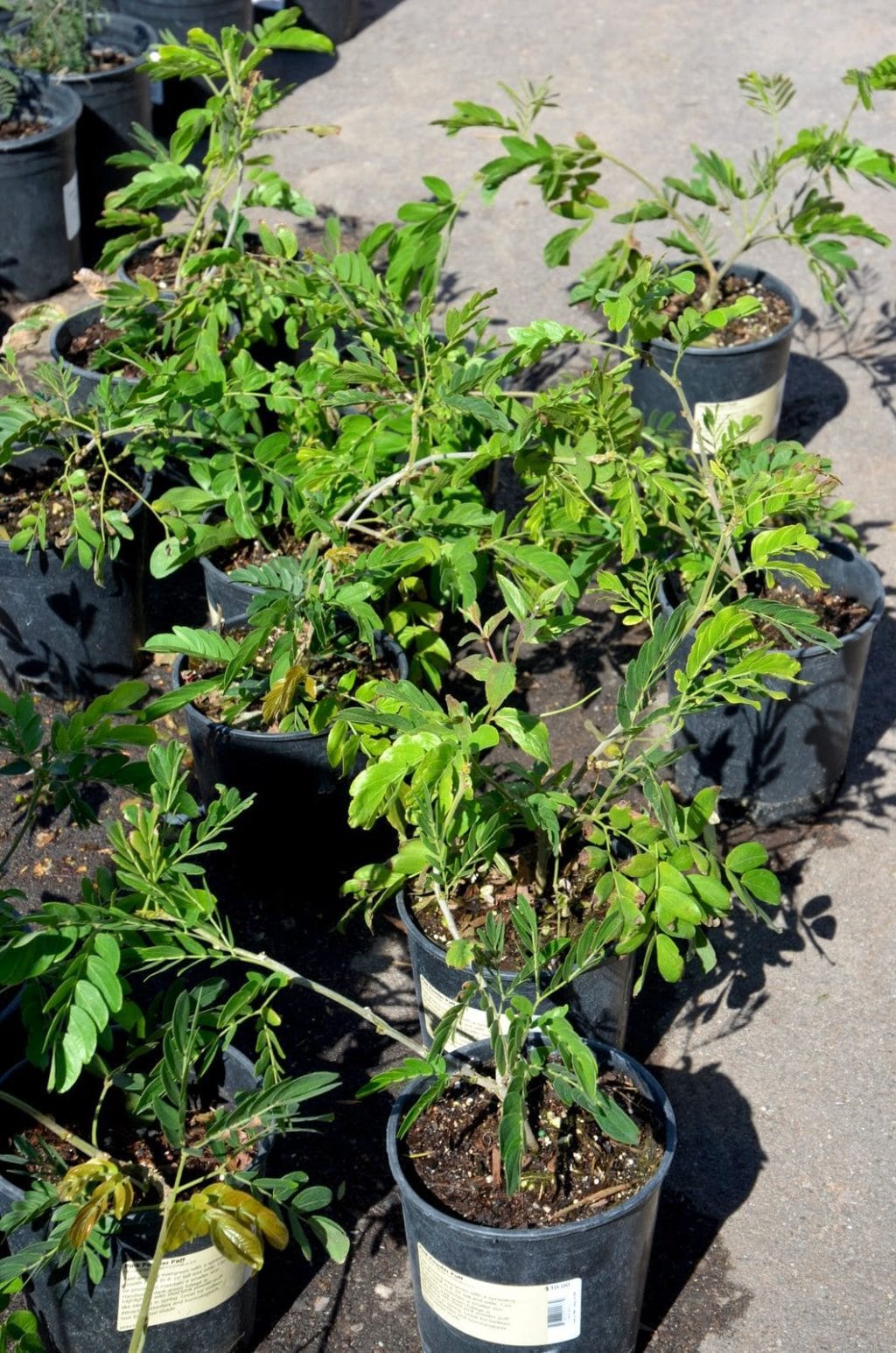
I like that is hardy to 20 degrees, which should make the occasional dips into the low 20’s in my garden no problem.
I planted it along the eastern side of my backyard, against a patio pillar. It will receive morning sun and afternoon shade. Growing to its right is a 15 ft. tall Mexican Bird-of-Paradise (Caesalpinia mexicana) that I’ve pruned into a tree form. So, I think that they will look great next to each other.
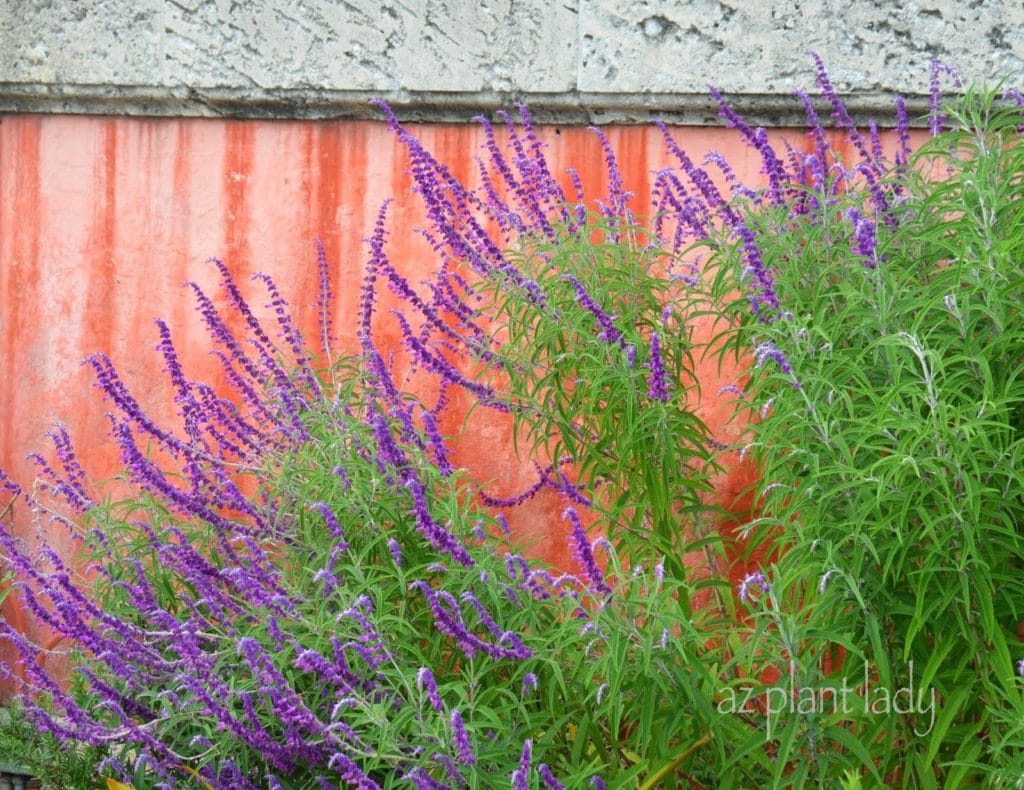
The next plant I chose is Mexican Bush Sage (Salvia leucantha).
Years ago, I planted this shrubby perennial in a parking lot of a golf course I worked at. It did beautifully and attracted hummingbirds. It would die back to the ground every winter, but quickly grew back in spring.
I have also seen Mexican Bush Sage grown in a variety of other areas during my travels, including Santa Barbara, CA and Miami, FL where it is grown as a perennial.
During a tour of the White House in Washington DC, I saw it grown there as well, where it is treated as an annual.
As much as I have liked this plant, I’ve never grown it in my own garden.
I planted it against the outside of one of my vegetable gardens where it will get morning and early afternoon sun. Two other factors were important in choosing this area for my new Mexican Bush Sage – I didn’t have to add drip irrigation for it because it will get residual moisture from the vegetable garden AND it will also attract pollinators to my vegetable garden.
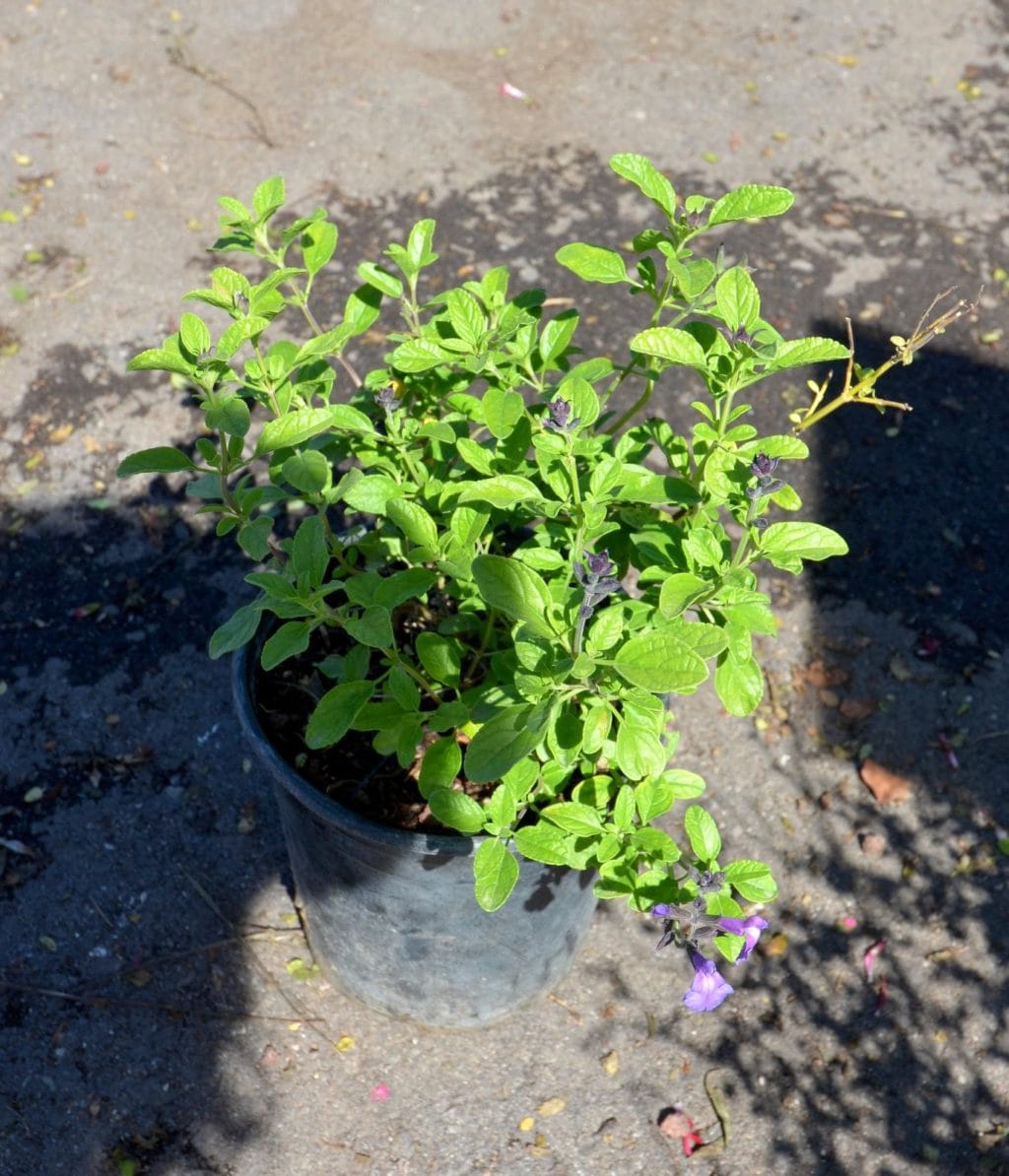
The last plant that I chose is one that many of you may be familiar with, just with a different flower-color.
Purple Autumn Sage (Salvia greggii ‘Purple’) was evidently a very popular plant at the sale because there was only one left, which went home with me.
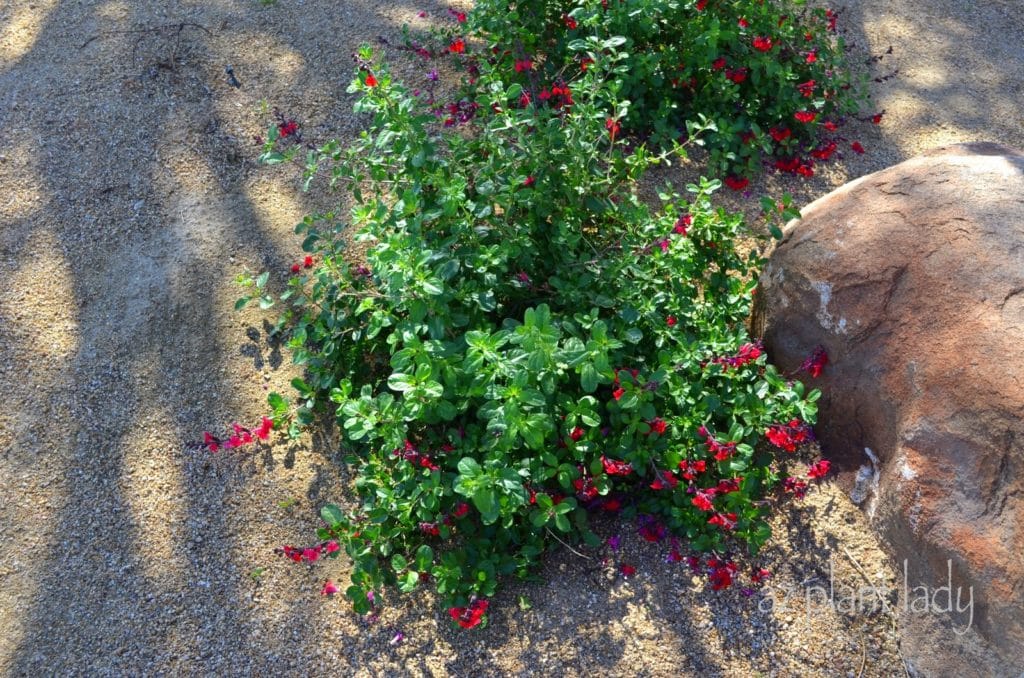
It will grow much like the red variety, pictured above, enjoying filtered shade or afternoon shade.
Flowers will appear in fall, winter and spring in low-desert gardens.
Other varieties of Autumn Sage are available with different-colored flowers like white, pink and salmon.
My new Purple Autumn Sage is also happy in its new home outside the vegetable garden where it will receive afternoon shade.
I will keep you updated on how well they grow in my garden.


